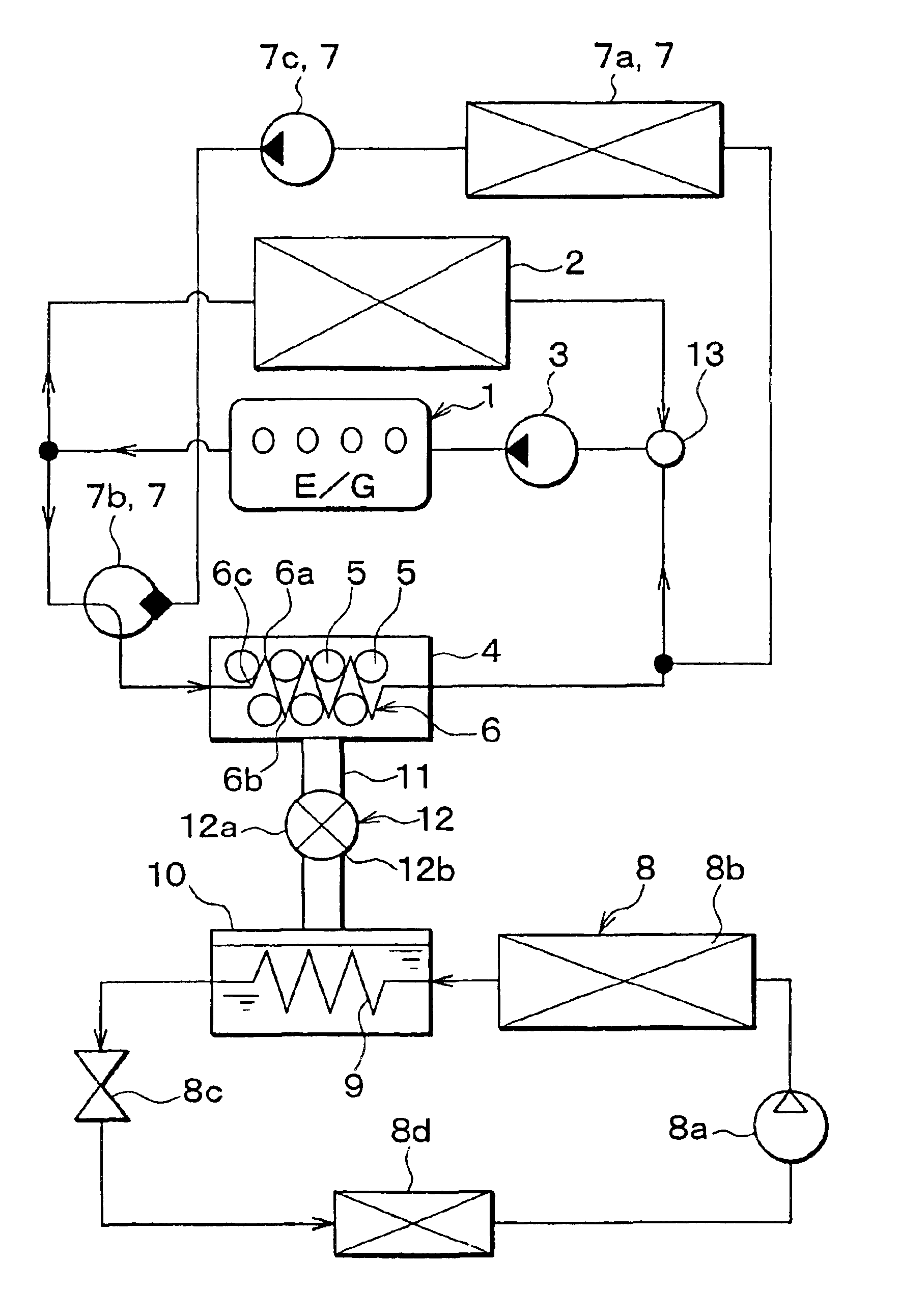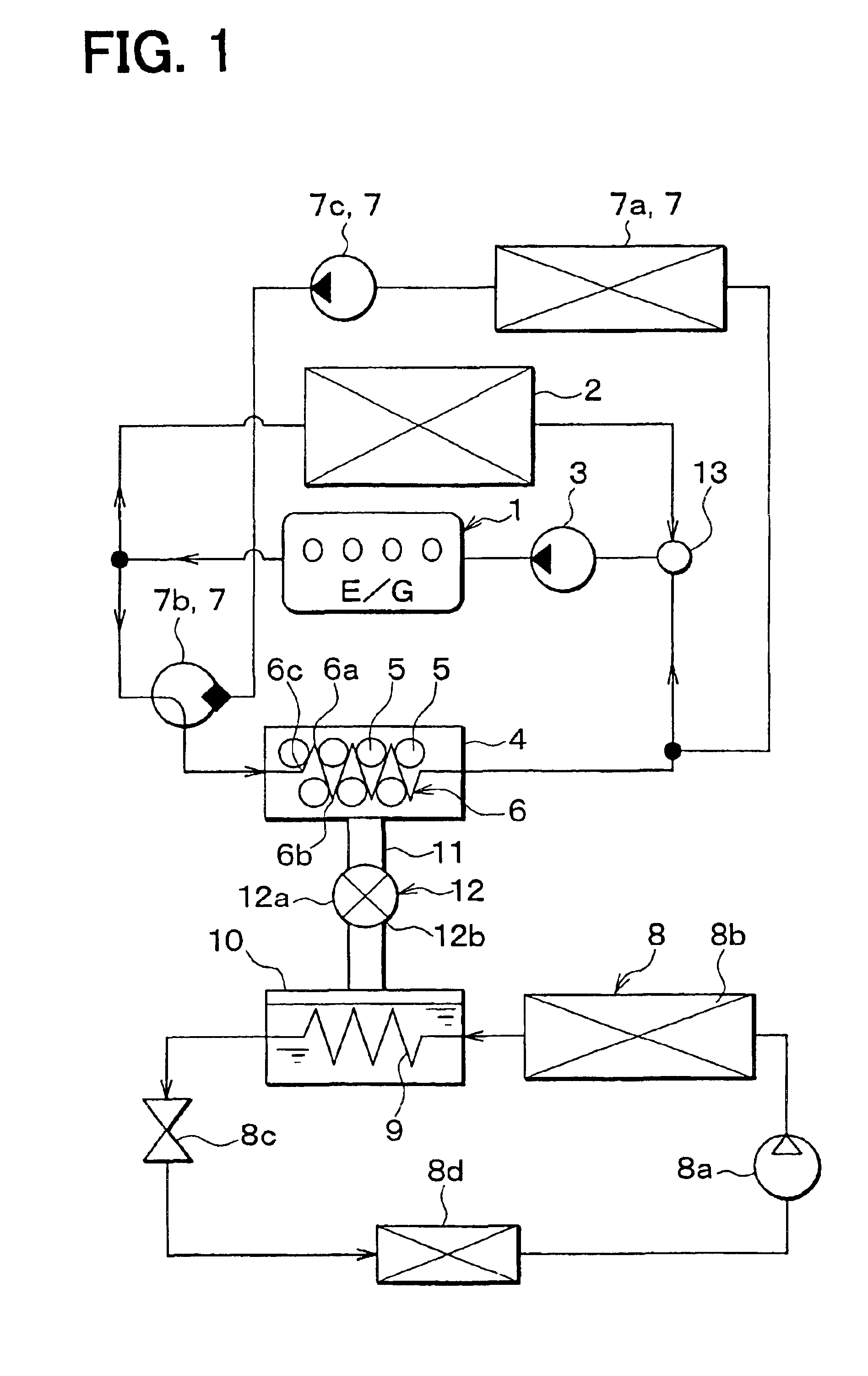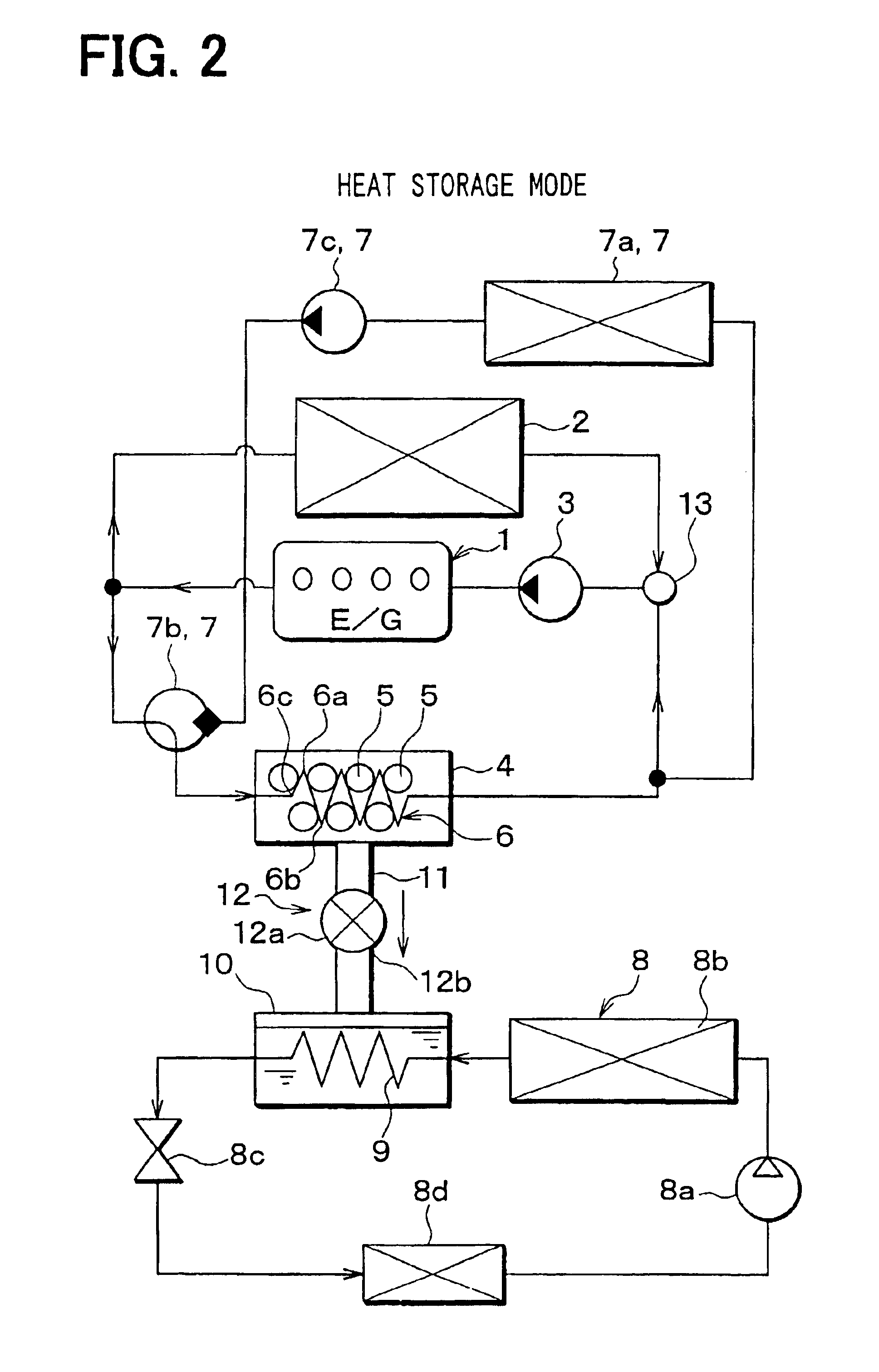Heat storage system for vehicle, with adsorbent
a technology of heat storage system and adsorbent, which is applied in the direction of defrosting, domestic cooling apparatus, separation processes, etc., can solve the problem of ineffective use of absorbent heat (stored heat)
- Summary
- Abstract
- Description
- Claims
- Application Information
AI Technical Summary
Benefits of technology
Problems solved by technology
Method used
Image
Examples
first embodiment
(First Embodiment)
In the first embodiment, the present invention is typically applied to a vehicle including an internal combustion engine, and a heat storage system for a vehicle according to the first embodiment is schematically shown in FIG. 1. An engine 1 is an internal combustion engine that is used as a drive source for driving the vehicle, and a radiator 2 cools cooling water having circulated in the engine 1 by performing heat-exchange between outside air and the cooling water from the engine 1. A pump 3 circulates the cooling water by using motive power obtained from the engine 1.
An adsorption core 6, including adsorbents 5 adhered to a surface thereof, is disposed in an adsorption chamber 4. As a temperature of the adsorbent 5 increases, an amount of medium capable of being adsorbed on the adsorbent 5 (medium-adsorbing capacity of the adsorbent 5) is reduced. Further, when vaporized medium (gas medium) is adsorbed on the adsorbent 5, the adsorbent 5 generates heat. In the ...
second embodiment
(Second Embodiment)
In the second embodiment, as shown in FIG. 6, the radiator 2 and the heat storage radiator 7a are integrated with each other. Specifically, as shown in FIG. 7, the integrated radiator includes plural tubes 2a in which cooling water flows, header tanks 2b, 2c, and a separator 2d for partitioning a space in the header tank 2c at a water outlet side. The header tanks 2b, 2c communicate with tubes 2a at both ends of the tubes 2a in its longitudinal direction, respectively. As shown in FIG. 6, a three-way switching valve 14 switches any one of a cooling water stream from the radiator 2 and a cooling water stream from the heat storage radiator 7a.
In the second embodiment, the other parts are similar to those of the above-described first embodiment. Therefore, in the second embodiment, one of the heat storage mode, the warm-up / auxiliary-cooling mode and the auxiliary-cooling priority mode can be selected similar to the above-described first embodiment.
third embodiment
(Third Embodiment)
In the third embodiment shown in FIG. 8, the apparatuses constructing the adsorbent cooling unit 7 such as the heat storage radiator 7a described in the first embodiment, are eliminated, thereby simplifying the construction of the heat storage system.
Even in the third embodiment, the other parts are similar to those of the above-described first embodiment. Therefore, in the third embodiment, one of the heat storage mode, the warm-up / auxiliary-cooling mode and the auxiliary-cooling priority mode can be selected similar to the above-described first embodiment.
PUM
| Property | Measurement | Unit |
|---|---|---|
| temperature | aaaaa | aaaaa |
| temperature | aaaaa | aaaaa |
| temperature | aaaaa | aaaaa |
Abstract
Description
Claims
Application Information
 Login to View More
Login to View More - R&D
- Intellectual Property
- Life Sciences
- Materials
- Tech Scout
- Unparalleled Data Quality
- Higher Quality Content
- 60% Fewer Hallucinations
Browse by: Latest US Patents, China's latest patents, Technical Efficacy Thesaurus, Application Domain, Technology Topic, Popular Technical Reports.
© 2025 PatSnap. All rights reserved.Legal|Privacy policy|Modern Slavery Act Transparency Statement|Sitemap|About US| Contact US: help@patsnap.com



